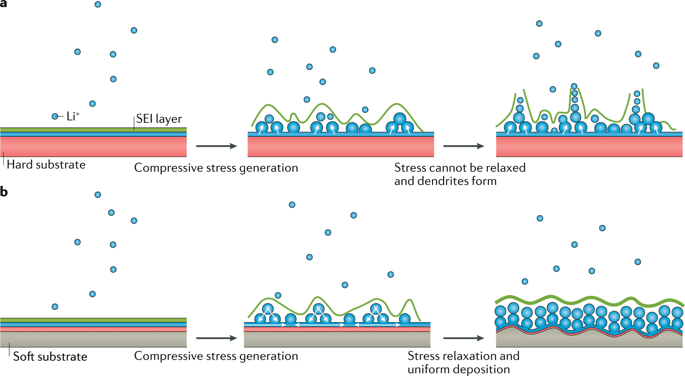Nature Reviews Materials ( IF 83.5 ) Pub Date : 2020-02-10 , DOI: 10.1038/s41578-019-0166-4 Matthew Li , Jun Lu , Xiulei Ji , Yanguang Li , Yuyan Shao , Zhongwei Chen , Cheng Zhong , Khalil Amine

|
The inability of current battery technologies to keep up with the performance requirements of industry is pushing forward developments in electrochemistry. Specifically, the battery’s negative electrode, the anode, presents many unique chemical, physical and engineering challenges. Lithium-based battery technologies have dominated the past decade, but concerns about the limited supply of lithium in the Earth’s crust have led researchers to look towards alternative metal-ion technologies. Various alkali metals (such as sodium and potassium) and alkali earth metals (such as magnesium and calcium) have attracted significant research interest. In this Review, we analyse these technologies in a coherent manner, addressing the problems of each type of anode, rather than those of specific types of metal-ion batteries. Covering direct metal plating and stripping, intercalation-based, alloy-based and conversion-reaction-based anode technologies, this analysis will offer the reader a comprehensive understanding of the behaviour of different metal-ion anodes and of what can be learned by transferring knowledge between these different systems.
中文翻译:

非水多价离子和单价离子电池阳极的设计策略
当前的电池技术无法满足行业的性能要求,从而推动了电化学的发展。具体而言,电池的负极即阳极提出了许多独特的化学,物理和工程挑战。锂电池技术在过去的十年中占据了主导地位,但是由于人们对地壳中锂供应有限的担忧,导致研究人员开始寻求替代性金属离子技术。各种碱金属(例如钠和钾)和碱土金属(例如镁和钙)引起了广泛的研究兴趣。在这篇评论中,我们以连贯的方式分析了这些技术,以解决每种类型的阳极问题,而不是特定类型的金属离子电池的问题。


























 京公网安备 11010802027423号
京公网安备 11010802027423号